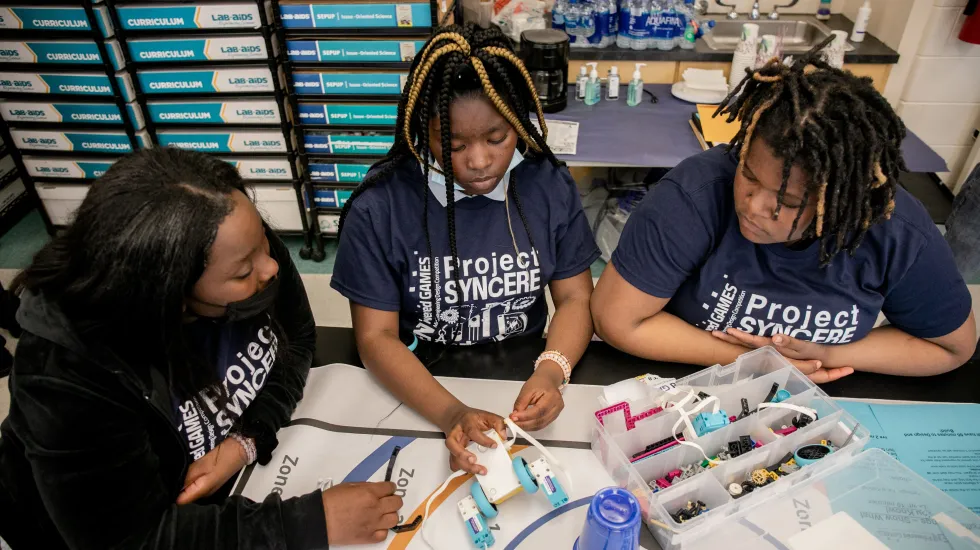
They started with a computer and a box of a Legos.
Five teams of 7th graders then had one hour to use them to build a robot that could push plastic cups around a board.
A timer at the front of a classroom at Genevieve Melody Elementary School ticked down as they got to work: 55 minutes, 25 minutes, 10.
And finally: “Time’s up!” teachers shouted.
The students clapped and high-fived. On their tables, each team had built a battery-powered robot. Students had used those computers to write code that told their robot’s control unit what to do.

Each robot looked different, since students could make their own decisions about which pieces to use.
But all had the same goal: to score the most points, based on where their robot pushed four plastic cups on the board.
The students watched eagerly as their robots moved the cups, cheering as they accumulated points. The winning team tallied 80 points after their robot pushed all four cups into high-scoring zones.
The event, called the ENpowered Games, was a chance for the students to use skills they’d learned over 10 weeks in a class organized by Project SYNCERE.
This year, around 250 Chicago Public School students participated at nine schools on the city’s South and West sides.
At Genevieve Melody, 7th grade students get lessons from Project SYNCERE once a week in place of science lab. The timing of the class differed among the other schools.

The program is geared towards students currently underrepresented in STEM fields, meaning the areas of science, technology, engineering and math. Project SYNCERE aims to introduce kids to those subjects and help them find ways to get involved.
Adrianne Ball, Project SYNCERE’s director of programs, said if kids are exposed to STEM fields early, they can find out if they like them and ultimately make better decisions about their future.
“It’s really important to diversify the career options for students,” Ball said. “If you don’t know someone who’s done it, or you don’t know anyone who looks like you that’s done it, you might discount it [and think] ‘I can’t do that,’ or ‘I shouldn’t do that.’ And we just want to dispel that myth.”
Over 10 weeks, participants learn aspects of engineering, such as computer coding, as well as building prototypes.
They also complete a group project, designing and building an eco-friendly product for the home. At the end of the course, they made short videos introducing their products, and a panel of about 70 judges, mostly scientists or engineers, evaluated the ideas.
Scores from the robot challenge, the environmental challenge, and an online quiz will be combined to determine the winning schools and groups. Prizes include trophies and Uber Eats gift cards. Awards and scores will be revealed Friday.
One group, Ball said, designed a shower with a motion sensor — “so when you walk out of the shower, the water automatically stops, to conserve water,” she said.

Student Deasia Pernell said her group built a prototype of motion-sensor lights that turn off faster than typical automatic lights.
She’s enjoyed the program and said she’s learned a lot — being a part of it makes her “happy and feel good,” she said.
Pernell said the classes had her and her team ready with the skills they would need to work together on the robot challenge.
Despite being on the clock, she said, “we also wanted to take our time to make sure we had the right answers and make it look good so we could win the competition.”
What does she want to be when she grows up?
“An entrepreneur,” Pernell said, “and also a dentist.”








